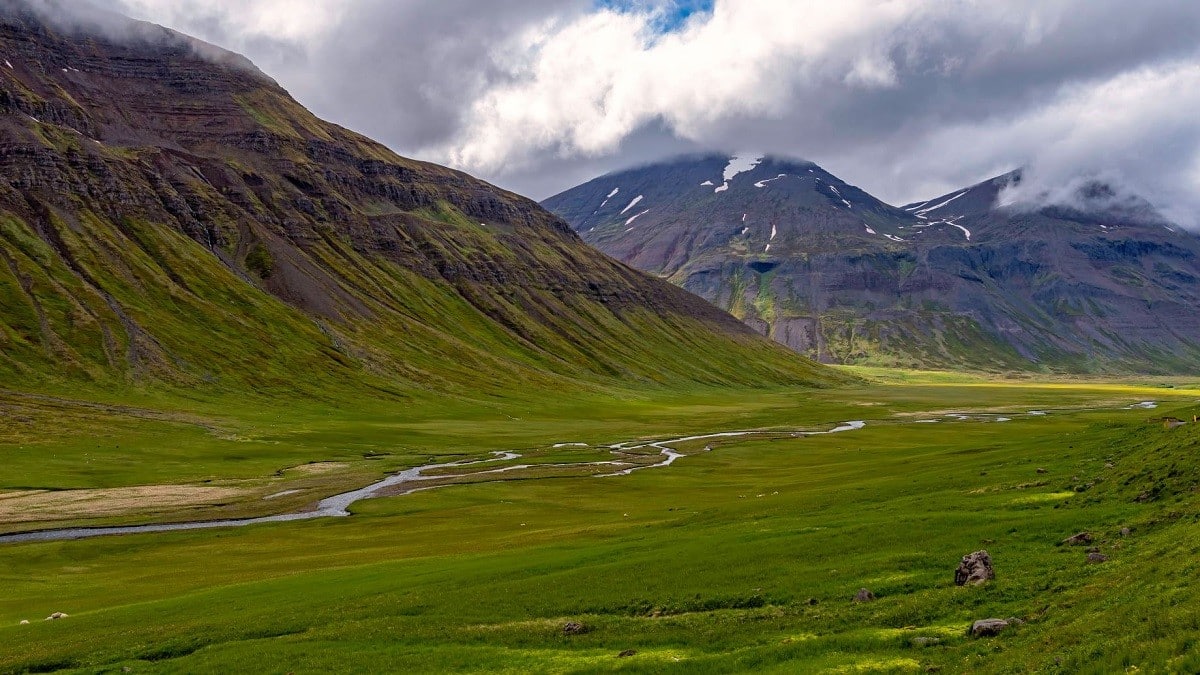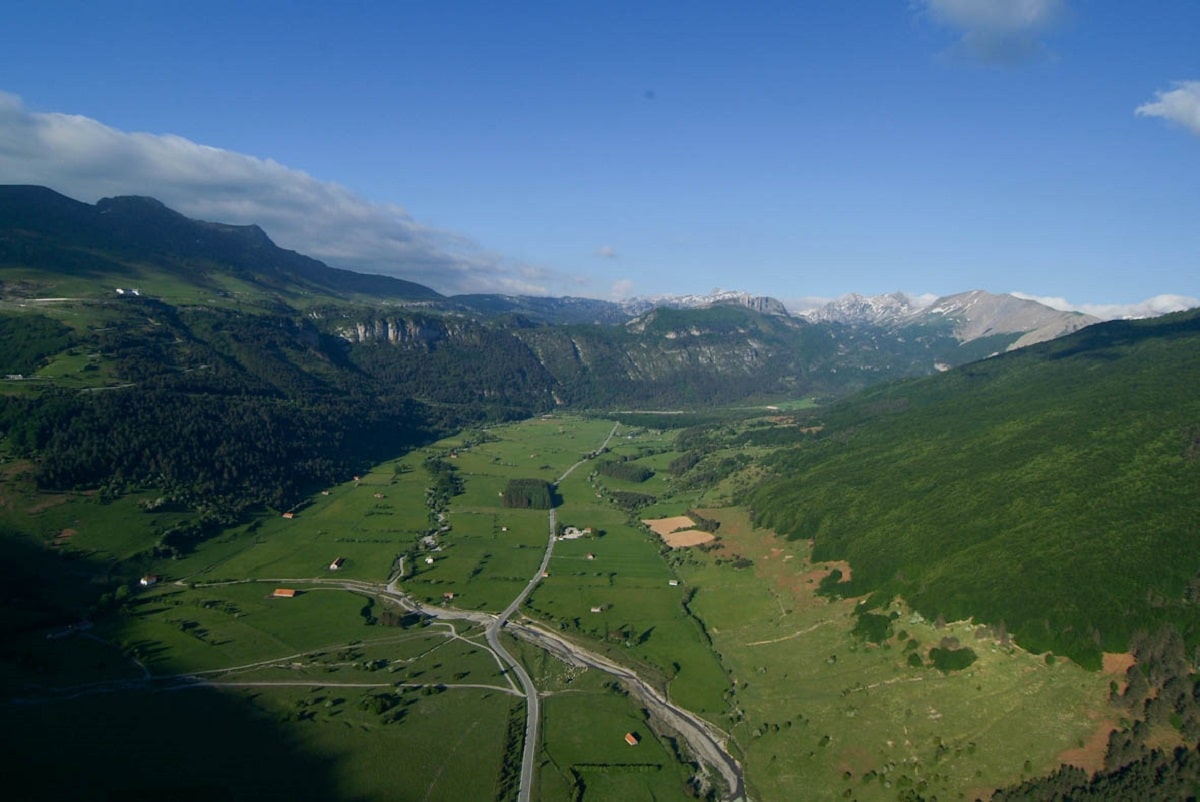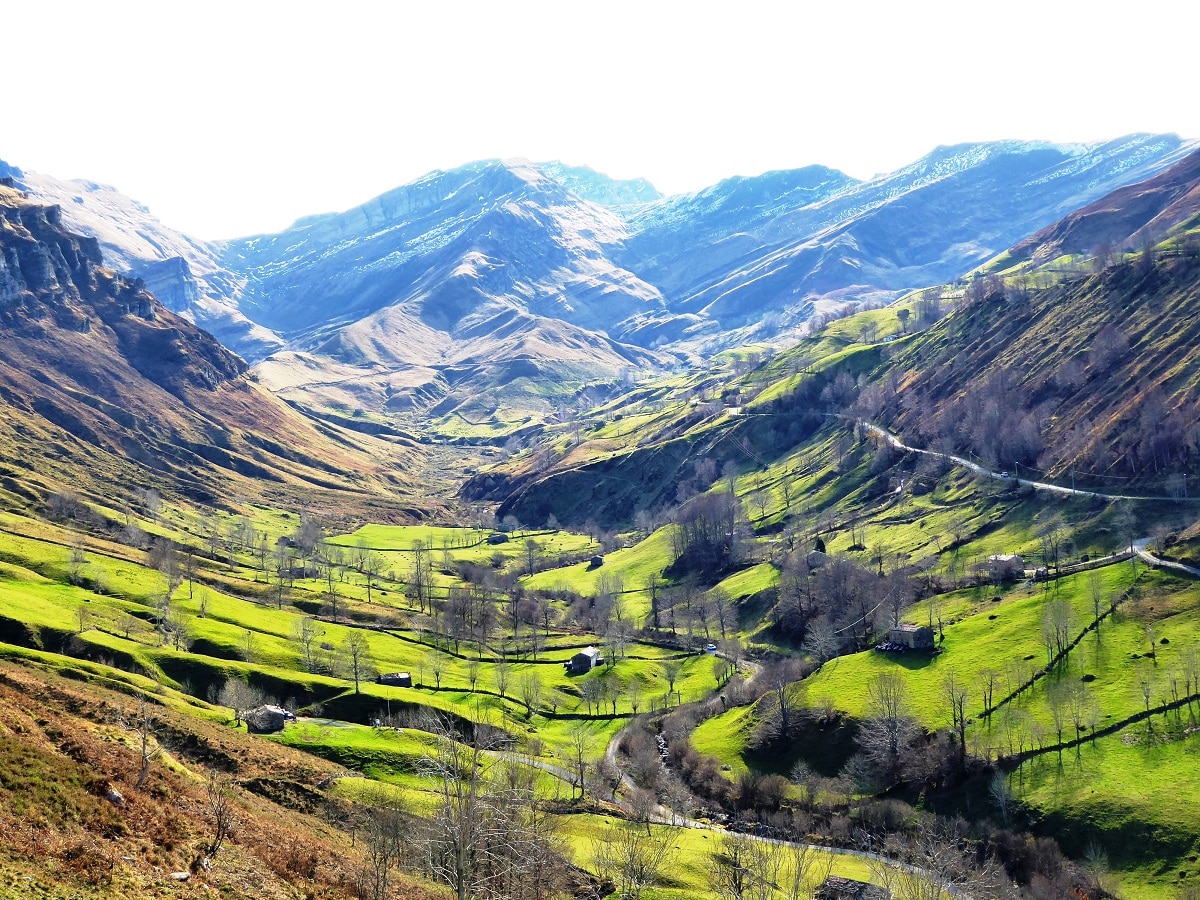
Glacier valleys, also known as ice valleys, refer to valleys where large-scale glaciers circulate or once circulated, leaving clear glacial landforms. A glacier valley It is of great importance for the biodiversity of ecosystems and ecological balance.
For this reason, we are going to tell you everything you need to know about what a glacial valley is, its geomorphology characteristics.
What is a glacial valley

The glacial valleys, also commonly called glacial troughs, are those valleys in which we can find that they have left behind typical relief forms of glaciers.
In short, glacial valleys are like glaciers. Glacial valleys are formed when large amounts of ice accumulate in glacial cirques. Ice from the lower layers eventually moves to the bottom of the valley, where it eventually becomes a lake.
One of the main characteristics of glacial valleys is that they have a trough-shaped cross section, which is why they are also called glacial troughs. This feature is the main feature that allows geologists to distinguish these types of valleys where large amounts of ice slide or ever slide. Other hallmarks of glacial valleys are their wear and over-excavation marks, caused by the friction of the ice and the dragging of material.
Ancient glaciers on Earth deposited material previously eroded by ice. These materials are very heterogeneous, and generally form different types of moraines, such as bottom moraines, side moraines, tumbling moraines, and even worse, between which the famous glacial lake is usually formed. Examples of the latter are the glacial lakes that we can find on the margins of the European Alps (called Como, Mayor, Garda, Geneva, Constanta, etc.) or in some areas of central Sweden and many others.
Dynamics of a glacial valley

Regarding the erosion mechanism of glaciers, it is important to point out that glaciers are highly erosive and can act as conveyor belts for materials of all sizes contributed by the slopes, transporting them to the valleys.
In addition, there is a considerable amount of meltwater in the glacier, which can circulate at high speed in the tunnels inside the glacier, loading the material at the bottom of the glacier, and these subglacial currents are very effective. The material it carries creates abrasion, and rocks within the glacier can be crushed into a fine mixture of silt and glacier clay flour.
Glaciers can function in three main ways and they are: glacial start, abrasion, thrust.
In broken block quarrying, the force of the ice stream can move and lift large chunks of broken bedrock. In fact, the longitudinal profile of the glacier bed is very irregular, with zones that widen and deepen in the form of depressions called troughs or troughs, which are deepened by over-excavation of less excavated and more resistant rock. The area is then narrowed and is called a latch or threshold.
In cross section, platforms are formed in stronger rocks that flatten out at a certain height, called shoulder pads. Abrasion includes the grinding, scraping, and grinding of bedrock by the rougher ice-borne rock fragments. This creates the scratches and grooves. In polishing, it is the finer elements, like sandpaper on stone.
At the same time, due to abrasion, rocks are crushed, producing clay and silt, known as ice powder because of its fine grain size, which is contained in the melt water and has the appearance of skimmed milk.
By thrust, the glacier transports and pushes towards itself the decomposing material that it crushes and transforms as described above.
forms of erosion

Among them are recognized circuses, tarn, ridges, horn, neck. When modeling glacial valleys, they tend to occupy pre-existing valleys, which widen and deepen in a U-shape. Glaciers corrected and simplified the curves of the original valleys and eroded rock spurs, creating large triangular or truncated spurs.
In the typical longitudinal profile of a glacial valley, relatively flat basins and extensions follow one another, forming chains of lakes that receive the name of our parents when the basins fill with water.
For them, the Hanging Valley is an ancient tributary valley of a main glacier. They are explained because the erosion of glaciers depends on the thickness of the ice sheet, and glaciers can deepen their valleys but not their tributaries.
Fjords form when seawater intrudes into glacial valleys, such as those in Chile, Norway, Greenland, Labrador, and the southernmost fjords in Alaska. They are usually associated with faults and lithological differences. They reach great depths, such as the Messier channel in Chile, which It is 1228 meters deep. This can be explained by excessive excavation of ice eroding below sea level.
Glaciation can also mimic rocks that form sheep-like rocks, whose smooth, rounded surfaces resemble a flock of sheep viewed from a height. They range in size from one meter to tens of meters and are aligned along the direction of ice flow. The side of the ice fountain has a smooth profile due to the grinding effect, while the other side has angular and irregular profiles due to rock removal.
Forms of accumulation
The ice sheets have receded since the last ice age, about 18.000 years ago, showing an inherited relief along all the sections they occupied during the last ice age.
Glacial deposits are deposits made up of material deposited directly by glaciers, without a stratified structure and whose fragments have striations. From the point of view of grain size, they are heterogeneous, ranging from glacial flour to unstable aggregates transported 500 km from their region of origin, such as those found in Central Park in New York; in Chile, in San Alfonso, in the Maipo drawer. When these deposits combine, they form tillites.
The term moraine is applied to several forms that consist mainly of mountains. There are several types of moraines and long hills called drumlins. The frontal moraine is the mound at the front of a glacier that builds up in an arc when the glacier remains stable in one position for years or decades. If flow on the glacier continues, sediment will continue to accumulate on this barrier. If the glaciers recede, a layer of gently undulating moraine, called basal moraine, is deposited, as in the wetlands of the Great Lakes region of the United States. On the other hand, if the glacier continues to retreat, its leading edge may stabilize again, forming a retreating moraine.
Lateral moraines are typical of valley glaciers and carry sediment along the valley edges, depositing long ridges. A central moraine forms where two lateral moraines meet, such as at the confluence of two valleys.
Drumlins are smooth, slender parallel hills composed of moraine deposits laid down by continental glaciers. They can reach up to 50 meters and a kilometer long, but most are smaller. In Ontario, Canada, they are found in fields with hundreds of drumlins. Finally, forms composed of stratified glacial fragments such as kame, kame terraces and eskers are identified.
I hope that with this information you can learn more about what a glacial valley is and its characteristics.